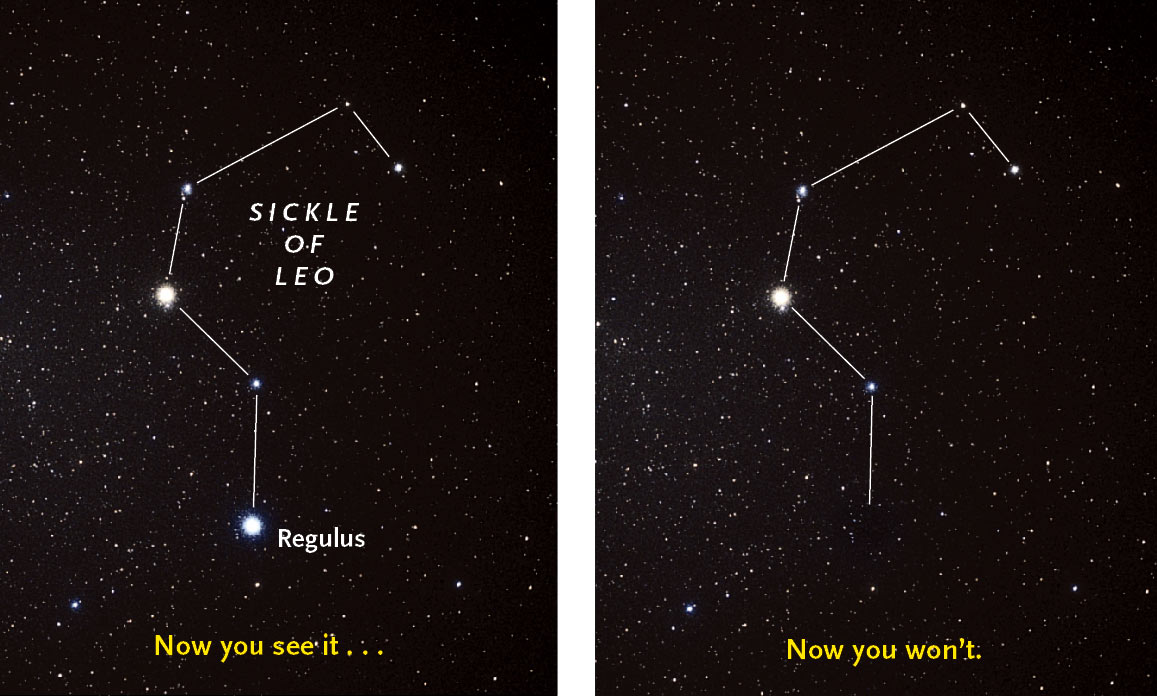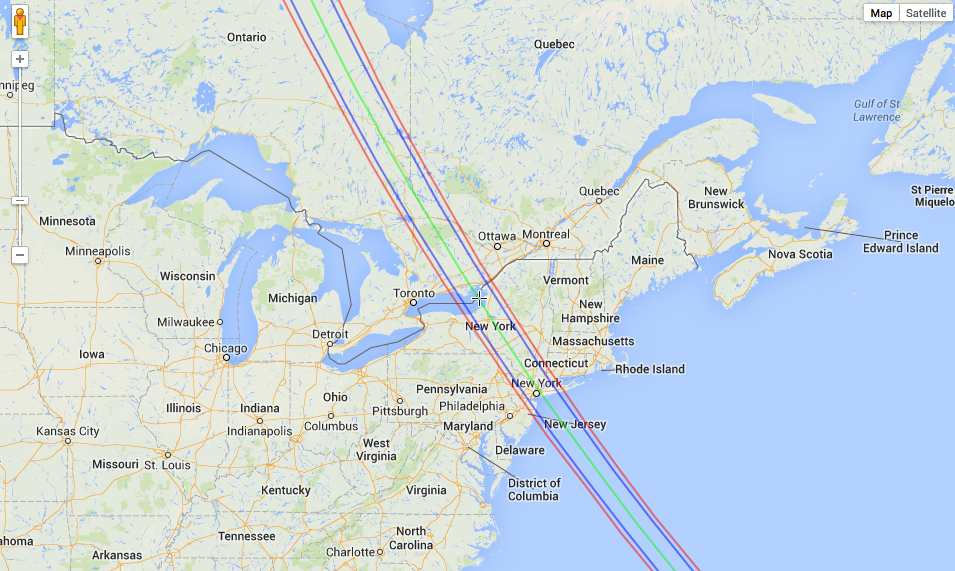Giant Asteroid Eclipses Star Tonight in Rare Celestial Event: How to Watch Live

An asteroid the size of Rhode Island will briefly blot out one of the brightest stars in the sky overnight tonight (March 19-20), and you can watch the rare celestial event live online, weather permitting.
At around 2:05 a.m. EDT (0605 GMT) Thursday morning (March 20), a 45-mile-wide (72 kilometers) asteroid 163 Erigone will eclipse Regulus, as seen from a swath of North America, making the 22nd-brightest star in the sky disappear for a few seconds.
This "occultation" will be visible from the ground only to people in a narrow corridor in northeastern North America. However, the online Slooh Space Camera will offer live views of the eclipse during a show that begins at 1:45 a.m. EDT (0545 GMT) Thursday. You can follow it at www.slooh.com or watch the asteroid-Regulus webcast here on Space.com, courtesy of Slooh. [Rare Asteroid Eclipse of Star Regulus: A Photo Guide]
"In my entire 40 years as a professional astronomer, I've never witnessed a star as bright as Regulus — Leo's 'alpha' luminary — being blocked as seen along a populated Earthly path in an easily accessible region," Slooh astronomer Bob Berman said in a statement.
"That's what will happen early Thursday morning," he added. "It’s hard to describe the excitement of this event. Regulus will vanish, and the constellation Leo will temporarily look totally different for as much as 14 seconds, as seen from New York City and about a 100-mile wide path extending to that city’s north and west."
The occultation holds more than mere gee-whiz appeal, researchers say. It also offers an opportunity to learn more about 163 Erigone, which circles the sun in the main asteroid belt between Mars and Jupiter.
"With accurate timing from a number of observers spread along the path, we can actually determine the asteroid’s size and shape to a remarkable degree of accuracy," Slooh host and observatory director Paul Cox said in a statement.
Breaking space news, the latest updates on rocket launches, skywatching events and more!
The eclipse of Regulus will be visible to skywatchers in New York City, as well as parts of New Jersey, Connecticut, upstate New York and Ontario.
Editor's note: If you snap a great photo of rare asteroid occultation of the star Regulus, or any other night sky view, and would like to share it with Space.com for a story or gallery please send comments and images to managing editor Tariq Malik at: spacephotos@space.com.
Observers in New York City can design a (very late) night on the town around the occultation. The Intrepid Sea, Air and Space Museum and the Amateur Astronomers Association of New York are hosting a 163 Erigone-Regulus event tonight, from 11:59 p.m. to 2:30 a.m. EDT (0359-0630 GMT).
The free eclipse celebration will take place at the Intrepid Sea, Air and Space Museum, which is located at Pier 86 in Manhattan; visit the Intrepid website here for details and to RSVP (required).
"Intrepid Museum educators will be on hand to discuss and explain the occultation of Regulus prior to the cosmic event, which will take place a little after 2:05 AM EDT," museum officials wrote in a media advisory. "Guests are welcome to bring their own binoculars and telescopes; however, telescopes are not necessary to view the occultation."
Follow Mike Wall on Twitter @michaeldwall and Google+. Follow us @Spacedotcom, Facebook or Google+. Originally published on Space.com.

Michael Wall is a Senior Space Writer with Space.com and joined the team in 2010. He primarily covers exoplanets, spaceflight and military space, but has been known to dabble in the space art beat. His book about the search for alien life, "Out There," was published on Nov. 13, 2018. Before becoming a science writer, Michael worked as a herpetologist and wildlife biologist. He has a Ph.D. in evolutionary biology from the University of Sydney, Australia, a bachelor's degree from the University of Arizona, and a graduate certificate in science writing from the University of California, Santa Cruz. To find out what his latest project is, you can follow Michael on Twitter.

